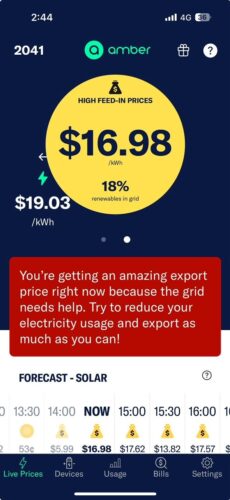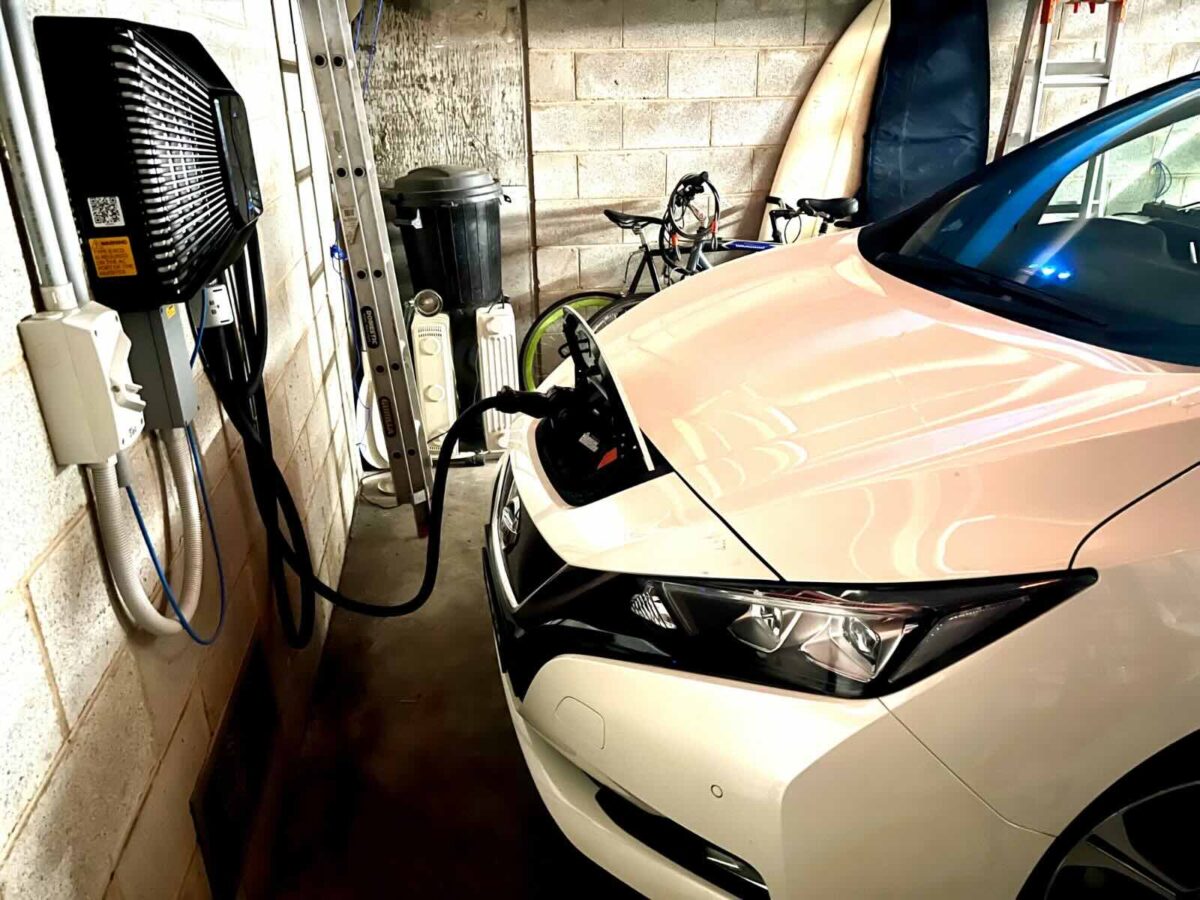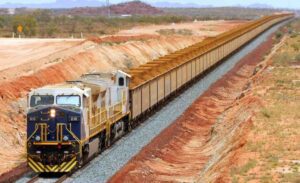On Thursday, February 29, during a heat wave, the price of electricity on the NSW electricity market spiked as the operational demand reached its third highest levels on record.
Rooftop solar PV helped to bring down the peak demand from even higher levels (a record high was set for “native” demand earlier in the day), and even as the sun started to go down after 5pm the air conditioning load was still impacting.
The sell price on my Amber app went up to $17/kWh, so I took the opportunity to help the grid by discharging from our Nissan Leaf via the Wallbox Quasar bidirectional charger, in what is one of only a handful of such residential installation in Australia at present.
The 3.5 kW PV array on the roof of our energy efficient, fully electrified Sydney townhouse had topped up the car battery to the 62 kWh limit over the previous few days, avoiding some negative feed-in prices in the process.
The two hours of discharge took the battery down to 75%, and earned $100, all while having a swim and a beer on holidays on the other side of Australia.

This is the future.
Two underutilised assets (private passenger vehicles and the electricity distribution grid) operating together to help solve the increasingly problematic “duck curve” problem.
The potential is enormous, with an EnX report for ARENA indicating that by 2050 the usable storage in the EV fleet in Australia will be nearly fourfold larger than the NEM storage requirements and will represent one of the lowest cost storage options.
By the early 2030’s the capacity will be greater than all the other forms of storage on the NEM. Even with today’s EV fleet, the equivalent storage capacity is around 13.5 GWh or 70 times the capacity of the Hornsdale Power Reserve.
Of course, we also need to move the transport system to a more sustainable future, for the sake of urban amenity and public health, through reduced private motor vehicle ownership and use, greater use of public and active transport, and cost-reflective road pricing including congestion charges.
Even with these changes the potential battery capacity will be more than we need, especially if bidirectional chargers are the norm, and if we can implement consumer-friendly arrangements for buying and selling energy while meeting mobility needs.
The integration of consumer energy resources (CER) is increasingly important to achieve a rapid energy transition, to mitigate possible delays in utility-scale renewables and the associated transmission build and to support the potential for increases in rooftop PV.
Australia, of all countries, is best placed to leverage this opportunity to integrate the rapid growth in EVs for the benefit of consumers and the energy transition.
This has been highlighted in the recent ARENA and Energeia study, which showed the potential for V2G from the EV fleet to contribute to fast frequency response (FCAS) as well as leveraging the dynamic wholesale price as our household did on 29 Feb.
This can only happen if we get the policy settings right. As early adopters our household had to wade through the barriers. We need to remove these barriers in the next 12 months, or Australia will be left behind.
- A Californian Senate Bill (SB 233) proposes all EVs sold in California from 2027 are to be V2G enabled. Let’s follow Australia’s long overdue fleet efficiency standards with a similar requirement in Australia and require interoperability with different V2G chargers, to ensure that this market develops rapidly and in a competitive way.
- The AEMC needs to ensure that the original intent of the Power of Choice review is met, by enabling multiple trading relationships for different household CER assets.
- We need to make a one-stop shop for network business approval of V2G chargers, rather than each one having to approve them for connection to their network.
- We need to support Australian expertise, innovation and start-ups in the development of integrated systems, software, business models and technology, including an Australian V2G inverter-charger and associated home energy management systems.
- Capacity building and training for vehicle and equipment sales representatives, electricians, utility staff, strata managers and local government officials is needed to prepare for the growth of this industry.
There is a brief window to prepare for this opportunity. Australia leads the world in rooftop PV installations and in CER more generally. We could lead the world in V2G, to the benefit of the energy transition, but only if we act now.
Stuart White is the Director of the Institute for Sustainable Futures at the University of Technology Sydney.








